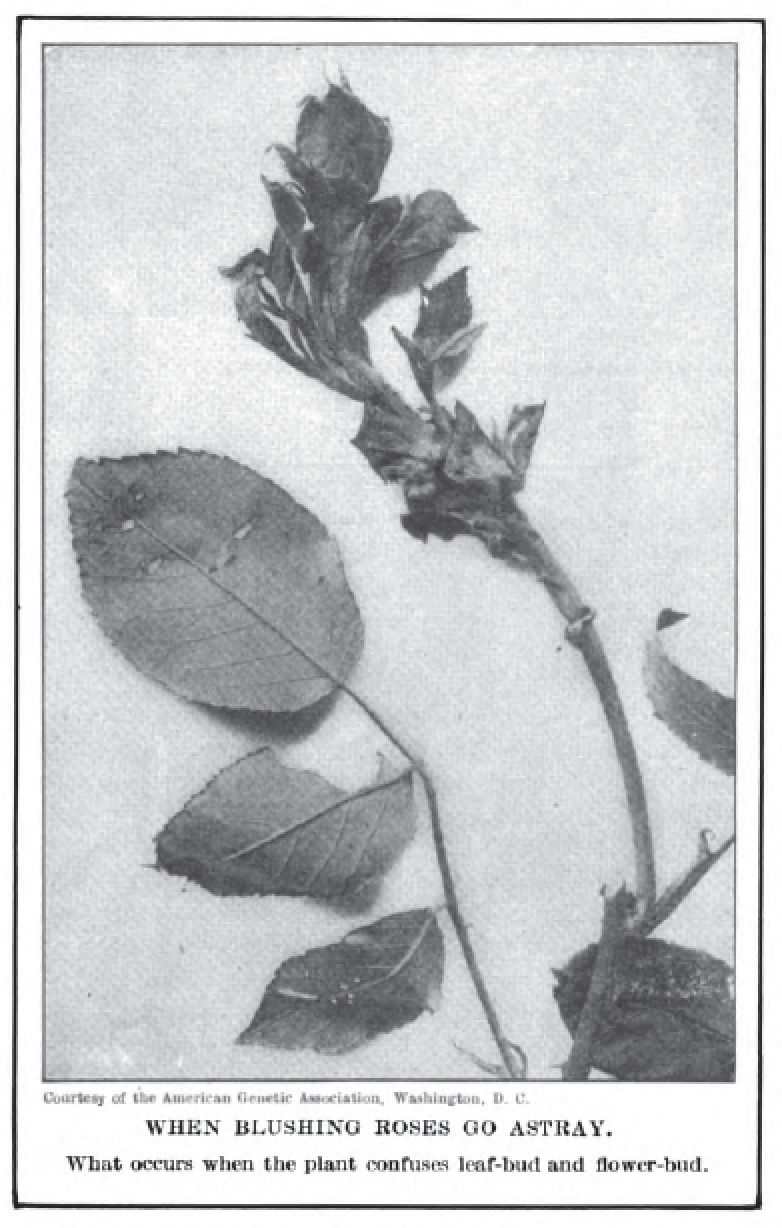Degenerate rose.
"Degenerate rose." Literary Digest 50, no. 20
(May 15, 1915): 1148.
[https://library-projects.providence.edu/rosarium/view?docId=tei/rg0004.xml]

Possibly a rose by any other name would smell as sweet; but how about a rose that assumes a perfectly unfamiliar shape, while retaining its name and plant-relationships? Every horticulturist knows, says John C. Uhrlaub in The Journal of Heredity (Washington, D. C.), that the floral organs of a plant, such as the sepals, the petals, stamens, and pistils, are all only so many modified leaves, and that under certain conditions leaf-buds can be turned into flower-buds at an early stage of their existence.
"Thus, by crippling the plants, gardeners force azaleas or camellias to produce flowers from the buds which the plants had intended to produce only leaves. The rose is a particularly good plant in which to trace this development, for it from time to time throws out flowers that fail to attain their normal development and are nothing more than modified leaves. A bush on my estate has been behaving most irregularly for two years, always sending out freak flowers under certain weather-conditions. Sometimes the roses are only half developed, just as if they were cut in two. Last spring it produced several twin flowers, later on some flowers that were lopsided, and on August 3 I noted the branch here photographed, in which the sepals have reverted to their original leafy character, clearly showing the pinnate margin characteristics of the species. The petals, too, although altho partly colored, were morphologically more like leaves than like the ordinary petals of a rose. Such phenomena are particularly common in the cabbage-roses."

